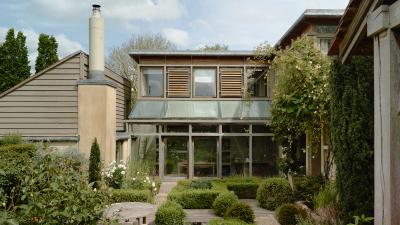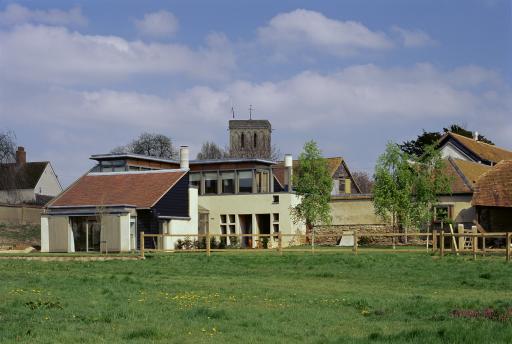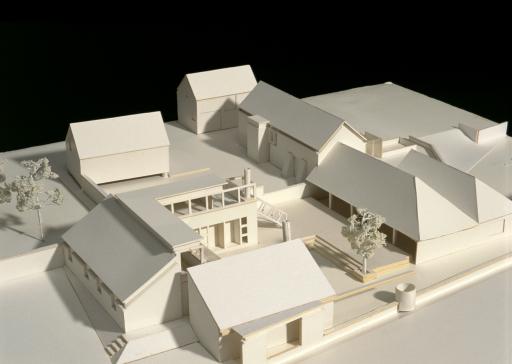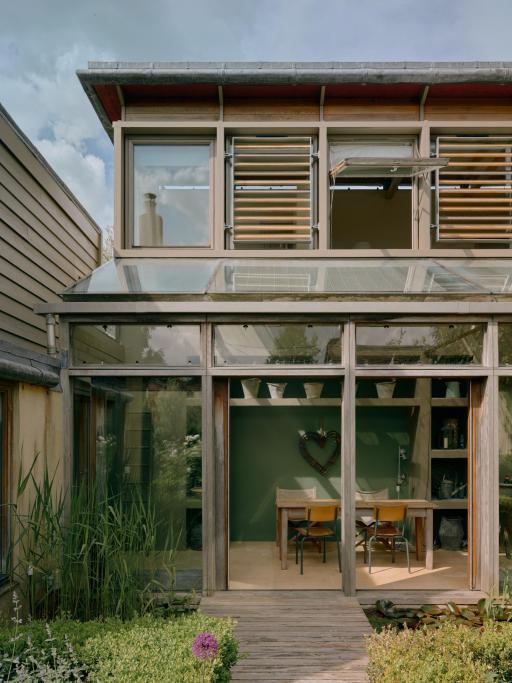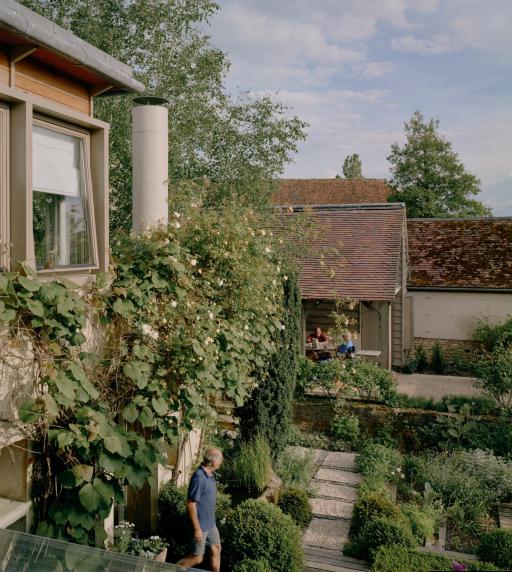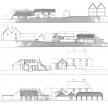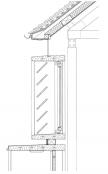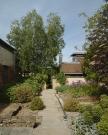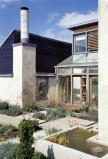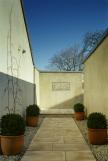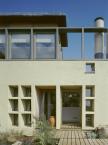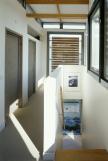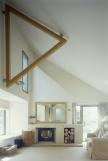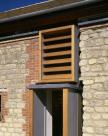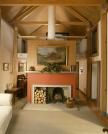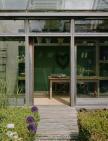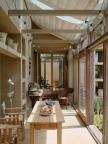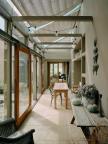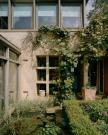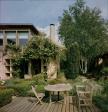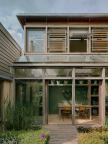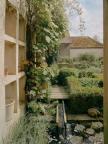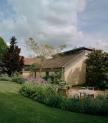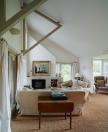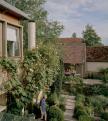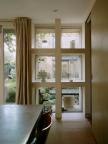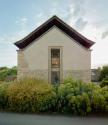Hollick and Bucknall House are situated in Haddenham, Buckinghamshire – a quintessential English village and significant conservation area. This private commission by a local family called for two new dwellings, one requiring the conversion and adaptation of existing farm buildings, the other a new house.
The designs respond to the geometry of the farmyard grouping and its relationship with the surrounding landscape as well as the family’s preoccupation with farming, horticulture and landscape gardening.
The adaption of the existing barns that form Bucknall House are combined with the new dwelling in both plan and form to extend the network of farmyard space. Two new courtyards are created between the new and old structures with the eastern edge enclosed by the existing timber grain store. A ha-ha on the open western boundary is set up by the geometry of a third open sided hay barn and delineates the farmyard cluster and the bucolic pastures beyond.
In the new dwelling a 'garden wall' organises both internal and external space; an architectural device that provides support for the stairs, conservatory, library, potted herbs and a fireplace and 'sung' for contemplation. It also links the spatial geometry of the house with the topography of the existing farmland.

The converted barn walls of Oxfordshire stone and local mud-based Wychert were carefully restored while timber posts and trusses stabilise and organise the new living environment.
Built over 25 years ago, both houses used a fabric first approach to thermal performance whilst retaining and re-using the fragile farmyard buildings.
The houses won an Architecture Today Award in 2024 for Buildings That Stand the Test of Time, with the judges commenting: “Hollick & Bucknall House stands as a timeless – and apparently effortless – response to the exquisite landscape in which it sits. While the garden has evolved and developed as a three-decade work in progress, the houses have remained largely unaltered, save for the life – and the stories – that have seeped into nooks, crannies, alcoves and walls.”
